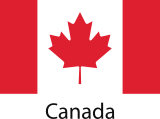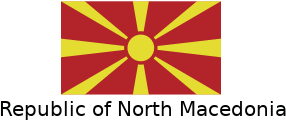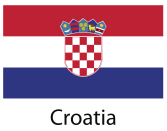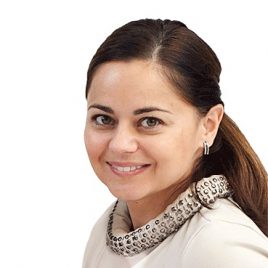
Biography
Dr. Liwia Minch received her DDS, PhD and Masters degree in Orthodontics Science from Wroclaw Medical University (Poland), and worked as an assistant professor in the department of Orthodontics and Dentofacial Orthopaedics between 2004 - 2019. Currently Dr. Liwia Minch runs a private orthodontic practice in Wrocław (Poland). Dr. Minch is a member and instructor of the Charles H. Tweed International Foundation for Orthodontic Research and Education. She also has a Master in Lingual Orthodontic Science (Hannover, Germany). For 5 years she has been working as an assistant in the Department of Orofacial Surgery. Her main interests are interdisciplinary treatment of adult patients, including periodontally compromised patients, surgical patients and preprosthodontic treatment. Dr. Minch is an author of over 100 articles and presentations. She's a member of Charles H. Tweed International Foundation for Orthodontic Research and Education, American Association of Orthodontists, Polish Orthodontic Society, European Orthodontic Society, Polish Academy of Aesthetic Dentistry.
Abstract
More and more patients - especially adults - are offered complex multidisciplinary treatment. Is such complicated, repetitive long term therapy always necessary? Where is the boundary between correct treatment and ``overtreatment``? During the lecture the menagement algorithms in patients with hipodontia, tissue defects will be presented as well as changes, which can be achieved in macro and micro aesthetics with a special emphasis on orthodontic, periodontal, implantological and prostehtic treatment.
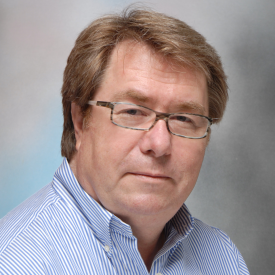
Biography
Dr. Moschos A. Papadopoulos is Professor, Chairman and Program Director at the Department of Orthodontics of the School of Dentistry of the Aristotle University of Thessaloniki, Greece, and Visiting Professor at the University of Messina, Italy and at the University of Campania “Luigi Vanvitelli”, Naples, Italy.
Dr. M. A. Papadopoulos is Honorary Editor of the ``Hellenic Orthodontic Review``, and served as Asst. Editor of the ``World Journal of Orthodontics`` and as Assoc. Editor of ``Stoma``. He also is/or served as Member of the Editorial Board of 19 peer reviewed journals, and as Reviewer for 47 orthodontic, dental and medical journals.
Dr. M. A. Papadopoulos served as President of the Balkan Association of Orthodontic Specialists (BAOS) and of the Orthodontic Society of Northern Greece (OSNG), as Vice President of the Hellenic Professional Union of Orthodontists, as Treasurer and Vice Secretary General of the Stomatological Society of Northern Greece, and as Member of the Board of Trustees of the Greek Orthodontic Society and of the Orthodontic Society of Northern Greece. Currently he is an active member in more than 22 national and international societies, federations, and unions.
Dr. M. A. Papadopoulos received several awards and distinctions, among others the ``Joseph E. Johnson Clinical Award” and the ``Turpin Award for Evidence-Based Research” from the American Association of Orthodontists, the “Regional Award of Merit” from the World Federation of Orthodontists, and the “Special Achievement Award” from the Balkan Association of Orthodontist Specialists.
Currently the main clinical and research interests of Dr. M. A. Papadopoulos include the subjects of ``noncompliance orthodontic treatment``, ``use of miniscrew implants as temporary anchorage devices in orthodontic treatment``, and ``evidence based orthodontics``.
Dr. M. A. Papadopoulos has written the books entitled ``Orthodontic treatment for the Class II non-compliant patient: Current principles and techniques``, ``Skeletal anchorage in orthodontic treatment of Class II malocclusion``, and ``Cleft lip and palate: Diagnosis and treatment management``, has published more than 215 scientific publications, and has presented more than 390 lectures, courses and papers worldwide.
Abstract
Orthodontic treatment of Class II malocclusion in terms of maxillary molar distalization can be very challenging by the use of conventional modalities, especially in patients with poor compliance. In these cases, noncompliance approaches can be used, however with a number of unwanted side effects, which diminish their clinical effectiveness. Miniscrew implants, can be used as temporary anchorage devices (TADs) to enhance anchorage and, if properly used, to counterbalance these shortcomings. This lecture will present through various clinical examples the basic principles and the rationale of noncompliance maxillary molar distalization, and will discuss the latest evidence-based data available regarding the effectiveness of the use miniscrew implants as temporary anchorage devices not only to support maxillary molar distalization, but the comprehensive treatment of Class II malocclusion as well.
Learning objectives
• Demonstrate the use of miniscrew implants to distalise maxillary molars.
• Understand the biomechanics and to be aware about the advantages and potential complications of the different distalization systems that are supported by mini-implant anchorage
• Evaluate in an evidence-based manner the efficiently the different distalization systems that are supported by mini-implant anchorage
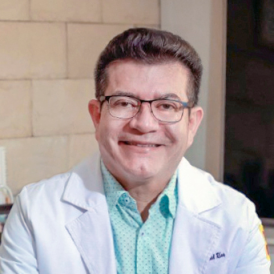
Biography
EDUCATION
1984 Dental Degree at UMSNH
Morelia, México
1989 Orthodontic Degree at Hospital for Children “Federico Gómez”
Mexico City, México
EXPERIENCE
1989 Member of the Mexican Association of Orthodontists
1989 -
Today Private Practice and exclusive in Orthodontics and Dentofacial Orthopedics
Morelia, México
1991 Member of the Mexican Board of Orthodontists
1998 Active member of the Charles H Tweed Foundation for Orthodontic
Research and Education.
Arizona, USA
2000 International Instructor at the Tweed Study Couse
Arizona, USA
2004 Member of the Board of Directors in the Charles H Tweed International Foundation
2011 International Lecturer and Professor in Europe, USA and Mexico in hands on courses
and seminars
2011 Special Member at Large in the Edward H Angle Society of Orthodontists
Midwest Component, USA
2013 Honorary Member of the Serbian Orthodontic Society 1998 -Today
April1995
PUBLICATIONS
Author of several papers in Orthodontic Journals American Journal of Orthodontists and
Dentofacial Orthopedics (AJO DO), The Angle Orthodontist, World Jorunal of Orthodontics,
the Tweed Profile, and others
CAPACITATION
Tweed Study Course
Tucson, Arizona, USA
Abstract
Our daily clinical practice of orthodontics is always full of many challenges. The benefits of maximum dentofacial esthetics, of optimal function, of providing health of the teeth and surrounding tissues, as well as facilitating long-term stability of the teeth will depend on certain factors that, unfortunately, have been ignored.
These factors will be discussed.

Biography
Dr. J. Martin Palomo is a tenured professor and the Orthodontic Residency director at Case Western Reserve University in Cleveland, Ohio. Dr. Palomo’s contributions to craniofacial imaging, informatics, and airway analysis have been recognized through medical and dental research awards, national and international presentations, and numerous peer-reviewed publications. He is the past chair of the AAO Committee on Technology, member of the AAO Council on Scientific Affairs, member of the AAO Foundation Planning Awards Committee, the AAO representative for Image Gently, member of the AAO Committee on Conferences and the Associate Editor for the Digital Orthodontics section of the AJODO. He is also a member of the AAO Task Force that provided a white paper on the orthodontist role on treating patients with Sleep Apnea. He is a board certified orthodontist, an Angle Society member, and an active member of both the Orthodontics and the Oral and Maxillofacial Radiology Associations, as well as the American Academy of Sleep Medicine.
Abstract
Traditionally we are trained to see and analyze the airway from only the lateral view on a cephalometric film. But the airway is a three-dimensional (3D) structure, and that third dimension may be hiding something relevant to our diagnosis. This presentation will highlight some of the airway research from Case Western Reserve University, and will show how different commercially available programs can be used to analyze the airway volumetrically, how the airway is different for different craniofacial situations, and what happens to the airway when we extract or expand as part of our treatment plan. With more than 80 respiratory disorders, the orthodontist can play a big role helping children and adults, specially regarding Obstructive Sleep Apnea (OSA). This presentation will show how the orthodontist can help identify and manage OSA in pediatric and adult patients, from using oral appliances, to surgical movement of the jaws, and newest hypoglossal stimulation methods. When moving from 2D to 3D, distances and angles turn into areas and volumes, and understanding the airway may take orthodontics to the next level, increasing the scope of what can be done clinically.
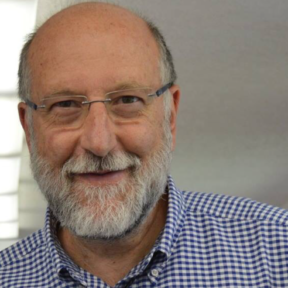
Biography
Clinical Director of the G.Cozzani Institute
Course Director of gaTE/TEos
Former Member of the Board of Directors of C.H.Tweed International Foundation for Orthodontic Research and Education, Tucson, AZ, USA
Former Member of the Board of SIDO (Italian Orthodontic Society), ASIO (Italian Association of Specialists in Orthodontics), AIdOr
(Italian Academy of Orthodontics), CEO (European College of
Othodontics)
AAO (America Association of Orthodontists) Ambassador in Italy
Abstract
Leafing through the list of objectives set by Charles Tweed on the
Orthodontic Philosophy that bears his name, the seventh stands out: “the seventh objective is the crux of the Philosophy. These clinical objectives must be pursued in an ethical molar compassionate manner with an overriding concern for the public’s welfare”. Levern Merrifield
reinforced the concept in his “Dimensions of the denture: Back to
basics” and today even some of the most famous opinion leaders in
Orthodontics push us to think about the importance of knowing the
basics of our Specialty in order to serve our patients by putting in place all new technological skills without forgetting that our only goal must always be the health of our patients over time.
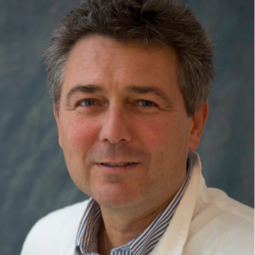
Biography
DMD, MScD, Specialist in Orthodontics
Chair: Istituto Giuseppe Cozzani
Director: Master of Science in Orthodontics, Unicamillus International University of Health and Medical Sciences (Rome, Italy).
Member: EOS, AAO, WFO, Angle Society of Europe, Edward H Angle Society of Orthodontists (East component).
President elect (2022): SIDO (Italian Society of Orthodontics),
Past president: Associazione Specialisti Italiani in Ortodonzia (2005), Italian Board of Orthodontics (2006-07), Accademia Italiana di Ortodonzia (2007-09), European Board of Orthodontists (2012-15), Società Italiana di Tecnica Bidimensionale (2016-18)
He published more than 101 papers in journals listed in Pubmed, one book and several chapters in orthodontic books. Google Scholar H index 25 (January 2021)
He reviewed papers for indexed orthodontic journals among which: Eur J Orthod, Orthod Craniofac Res, Am J Orthod Dentofac Orthop, Angle Orthod, J Clin Orthod., Korean J. Orthod,
Co-editor “Progress in Orthodontics” (2004-07), J Clin Orthod editorial board member (2018-....)
Abstract
A successful orthodontist must understand the patient's expectations and meet his/her needs while respecting roles, ethics and deontology.
When a patient comes to an orthodontic office, the practitioner makes a diagnosis, draws up a problem list and develops the ideal treatment plan and possible compromise treatment plans that he/she exposes to the patient trying to understand the patient's requests and needs to agree on the optimal therapy for that particular patient; often the chosen plan is one of the compromise treatment plans.
Compromise treatment plans will be presented and it will be explained how they came to be formulated in agreement with the patient, the techniques implemented will then be presented underlining how these must be chosen to obtain the maximum benefit of the patient.

Biography
Dr. Lekić is an Assistant Professor at the University of Manitoba, Department of Orthodontics. He completed his dental and orthodontic education at the Faculty of Dentistry, University of Manitoba.
He also practice full time as an orthodontist owner in Children’s Dental World. There are four clinics in two provinces in central Canada. Over 90% of his active patients are treated with Invisalign.
His research interests are in the field of biomechanics, skeletal and dental effects of Invisalign treatment with mandibular advancement.
As both clinical practitioner and educator, he enjoys being exposed to both aspects of the vibrant and ever changing field of orthodontics
Abstract
This lecture will focus on digital practice flow. Practice efficiencies and use of iTero scanners will be addressed. In addition, clinical cases and the scope of treatment with Invisalign will be shared.
Charles H. Tweed International Foundation for Orthodontic Research speakers
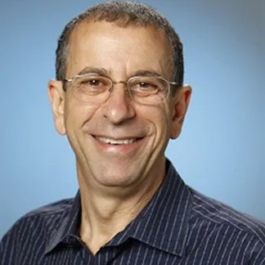
Biography
Dr. Robert Stoner has been in the full-time practice of orthodontics since 1983. He has the experience of having successfully treated over 7,000 patients in the past 28 years.
It is Dr. Stoner’s goal to create ideal dental esthetics and function with optimum facial balance and harmony in a friendly and compassionate environment. He has developed numerous techniques for moving teeth and controlling the supporting bones and has headed numerous research projects. Dr. Stoner serves yearly on the teaching staff of the Tweed Course in Tucson, Arizona where they teach a 2 week intensive course to doctors from over 100 countries and most university programs in the USA for which there is a 3 year waiting list. For over ten years, Dr. Stoner served as a volunteering clinical professor in the Department of Orthodontics at Indiana University School of Dentistry.
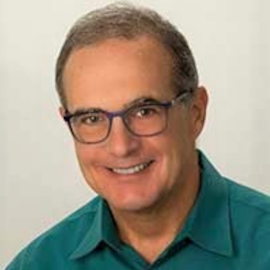
Biography
Dr. Ward, received his undergraduate degree from John Carroll University. He then attended Case Western Reserve University School of Dentistry graduating at the top of his class. Upon graduation, he was invited to attend graduate school at the world leading Department of Orthodontics at Case Western Reserve University.
He has published numerous articles in the leading orthodontic literature as well as lecturing both nationally and internationally. His passion for orthodontics led him to membership in the renowned Charles H. Tweed International Foundation, where he currently serves as the Assistant Course Director. In addition to his practice, Dr. Ward also serves as a clinical instructor in the Case Western Reserve University’s orthodontic department and Seton Hill University.
Dr. Ward was one of the first Board Certified orthodontists on the west side of Cleveland and in 2005 he voluntarily sought recertification. As a nominee for Director of the American Board of Orthodontics, Dr. Ward continues to practice at the highest level, delivering a quality of care that is unsurpassed.
In addition to the Charles Tweed Foundation, Dr. Ward is a member of numerous orthodontic and dental societies requiring yearly peer review of treated cases. For over twenty years Dr. Ward presented treated orthodontic cases at yearly meetings and received the highest marks awarded. Several of his patients have graced the cover of the American Journal of Orthodontics and Dentofacial Orthopedics.
Dr. Ward’s main area of focus is on diagnosis. Developing the correct treatment plan, based on each individual’s needs, is a benchmark of his practice. No two people are alike, therefore each orthodontic treatment is unique to that individual. Long term esthetics, stability, and function are mainstays in his practice and have been since he began his practice.

Biography
Dr. McCullough has a private practice in orthodontics in Yukon, Okla., and is a clinical professor in the Department of Orthodontics at the University of Oklahoma College of Dentistry. He holds his master’s degree in orthodontics from the University of Michigan and obtained his dental and undergraduate degrees from the University of Oklahoma. Certified by the ABO since 1990, Dr. McCullough is a member of the College of Diplomates of the ABO. He has been an Examiner for the ABO Clinical Examination since 2007. Dr. McCullough received the Earl S. and Wilma S. Shepard Distinguished Service Award from the ABO in 2016. Dr. McCullough also is a member of the American Association of Orthodontists, the Southwestern Society of Orthodontists and the Oklahoma Orthodontic Society of which he was 1989-90 president. He also is a member of the American Dental Association, the Oklahoma Dental Association and the Oklahoma County Dental Society. Active in the Charles H. Tweed International Foundation for Education and Research, Dr. McCullough has been assistant course director for the Tweed Study Course given in Tucson, Az., since 1996. He was a member of the Tweed Foundation board of directors from 2010-2016 and received the Foundation’s Distinguished Service Award in 2014. Dr. McCullough served as a director of The American Board of Orthodontics.
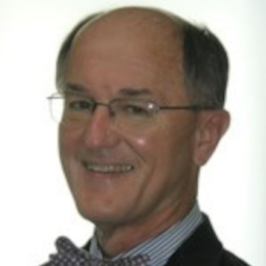
Biography
James L. Vaden has practiced orthodontics in Cookeville, Tennessee since June 1972 when he received a Masters Degree in Orthodontics from the University of Tennessee, College of Dentistry. During this period of time, he has provided orthodontic care and/or consultation to well over 10,000 patients, both children and adults. Dr. Vaden attended Vanderbilt University where he received a B.A. degree in History. He then went to dental school at the University of Tennessee and also received his graduate orthodontic training at the University of Tennessee.
In addition to his private practice, Dr. Vaden has authored over 75 articles which have appeared in peer reviewed orthodontic journals. He has authored or co-authored 15 book chapters that are in various orthodontic textbooks. He has given approximately 250 major lectures to national as well as international groups of orthodontists.
Since 1980, he has taught in the Department of Orthodontics at the University of Tennessee, College of Dentistry. He served from 1999 – 2010 as the Professor and Chairman of the Department of Orthodontics. This endeavor required that he travel between Memphis and Cookeville on a weekly basis for eleven years!! He continues to teach at the University of Tennessee and holds the academic rank of Professor. In addition to his service to the University of Tennessee, he was an adjunct clinical professor at the University of Michigan in Ann Arbor from 1991 until 2000.

Biography
She graduated from the Faculty of Medicine in Novi Sad, in 1988, Department of Dentistry, and has been a specialist in orthodontics since 2000.
She started orthodontic clinical practice in 2000 in spec. dental office “Dr Milorad Šilić”.
From 2007 to 2016, she was the co-owner of the private dental clinic “Ortis”, and from the 1st June 2016, she is the founder of the private orthodontic practice ORTO4U. Within her private practice, she is exclusively engaged in clinical orthodontics.
She is one of the founders and members of the Orthodontic Association of Serbia and a member of the European Association of Orthodontists.
She regularly attends congresses and professional gatherings in the country and abroad. She is an active member and a fellow at The Charles H. Tweed International Foundation For Orthodontic Research and Education.
Abstract
These changes involve the apparent change from placing the major emphasis on dental
and skeletal factors toward a greater interest in esthetics and the outcome of the
orthodontic intervention with regard to the apparition of the soft tissue and the face
There seem to be some trends in our specialty which emphasizes facial esthetics. This involves placing major emphasis on the outcome of the orthodontic intervention with regard to the effects on soft tissue and the face.
Several cephalometric standards have been introduced to
assess the attractiveness of the face; yet it has been shown that
Several cephalometric standards have been introduced to assess the attractiveness of the face, yet it has been shown that good facial harmony cannot exist within wide range of cephalometric values.
The lecture will point the out the comprehensive effect of orthodontic therapy on facial aesthetics, highlighting the importance of upper and lower incisor position.
Through a series of clinical cases, diagnostics, planning and treatment in high and low angle cases with various sagittal skeletal relations will be shown.
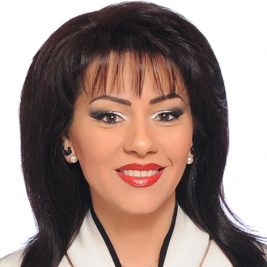
Biography
ÇELJANA TOTI DMD, MSc, PhD, PROF.ASSOC
- Attended the Faculty of Medicine, Department of Stomatology, Tirana- Albania (1991-1996).
- Graduated on 1996 with excellent results.
- 1997 Assistant Professor at the Department of Stomatology, Faculty of Medicine, Tirana
- From 1998 Lecturer in Orthodontics for the undergraduate students and for the post graduated student’s program, Faculty of Dental Medicine, Tirana.
- 2003 “Master in Orthodontics”.
- Continuing education attending courses, lectures and seminars in USA and Europe.
- Member of the Organizing or Scientific Committee, as well as active participant in scientific events in Albania as well as abroad.
- Author and coauthor of more than 150 scientific presentations and more than 55 scientific papers.
- Member of Unions and Associations: AOS, WFO, FEO, BAOS, AAAS, ADS, APS, SIDO.
- From 2003 member of the editorial board of the “Albanian Stomatological Review”, Scientific Journal of the Albanian Stomatological Society; 2011-2014, Member of the editorial board of the “Journal of Medical Sciences”, Scientific Journal of the Faculty of Medicine; from 2015 member of the editorial board of “Dental Leader Coursi Journal”.
- 2005 PhD in Orthodontics, thesis “Agenesis in permanent dentition”.
- from 2006-2014, Vice President of Albanian Orthodontic Society; from 2014 President of the Albanian Orthodontic Association; 2017-2018 and 2019-2020 Vice President of Balkan Association of Orthodontic Specialists (BAOS).
- 2014 “Assoc. Professor”.
- From 2014 Head of the Orthopedic Dentistry Department, Faculty of Dental Medicine.
Abstract
The effects of oral health and diseases related to it, the appearance of teeth, malocclusion and treatment of such anomalies on emotional, mental and social health of patients have been the focus of attention of clinicians and researchers all over the world during the last decades.
Malocclusion is considered a public health problem, due to its high prevalence in the society. Although it is not considered a disease, the disorder requires orthodontic treatment because it may increase the subject’s susceptibility to develop diseases such as periodontitis and trauma, and also affects oral functions, making it difficult to chew, swallow, and speak. Orthodontic treatment aims at oral health and restoration of function as objectives, however, psychological and social effects end up being the main reason for the demand for treatment.
Scientific evidence has shown that malocclusion can have a negative effect on the oral health-related quality of life (OHRQoL). A study was performed in Tirana aiming to evaluate the effect of orthodontic treatment on quality of life in patients aged 17-21 years old. An OHIP-14 (Oral Health Impact Profile-14) questionnaire, which is the most valid tool to evaluate OHQoL in all the age groups, was filled out from the participants before the orthodontic treatment and 12 months after the orthodontic treatment. Significant differences were found comparing OHIP-14 score at the beginning and at the end of the treatment. Differences were found between genders as well. The correlation between OHIP and IOTN was also evaluated. During this lecture we will compare our finding with similar studies by other authors.
The need for orthodontic treatment is related to OHQoL, but it is not necessarily related to clinical criteria, because clinical criteria reflect objectively only the severity of the problem and orthodontic treatment, compared to other dental treatments, is much more greatly under the influence of social and emotional factors. Health is something beyond the boundaries of clinical dimensions and social and emotional aspects should be incorporated in it. Therefore, it is necessary that clinical criteria be replaced by OHQoL tools to evaluate patient need for orthodontic treatment.

Biography
* 1987 - 1994 student of dental medicine at the universities of Sarajevo und Belgrade
* 1996 state examination, dentistry in the orthdontic practice Douglas Toll in Bad Soden
* 2004 - 2007 futher orthodontic training with Prof. Fischer-Brandies in Kiel and with Douglas Toll in Bad Soden
* 2007 specialisaton and examination in ortodontics at the University of Frankfurt/Germany
* Since May 2008 registered orthodontist
* 2009 - 2012 business partnership with Douglas Toll, co-ownership of practice Toll & Popovic
* from May 2019 licence to train post-graduate dentists in ortodontics
* form 2013 own registred practice ``Popovic & Colleagues``
* from 2013 - 2017: Visiting Professor at the university of Mariliad/Brazil (UNIMAR), postgraduate program.
Lecture
* From 2009 nationally and internationally active lecturer and host of courses and workshops
Memberships:
* Deutsche Gesellschaft für Kieferorthopädie (DGKFO) - German orthodontic society
* World Federation of Orthodontists (WFO)
* American Association of Orthodontists (AAO)
* European Orthodontic Society (EOS)
Abstract
The MARA has been published and estabilished as fixed functional class II correction appilance. It can be used durning active orthodontic treatment, together with brackets, TLB and even as anchorage within certain mechanics (medialization of lower molars, e.g.).
In this presentation, we will show that the MARA is an efficacious fixed functional in TMD patients (mandibular growth, condylar remodeling) and also as treatment modality in patients with decreased diameter of Posterior Airway Space (e.g. sleep apnea patients).
In our pilot study, we show that MARA can increase sagittal PAS dimensions in children and adolescents.
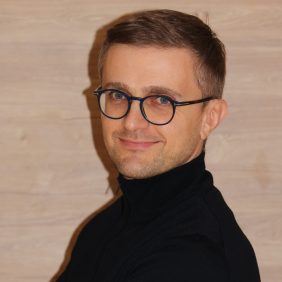
Biography
Dr Predrag Janošević graduated and attained PhD at University of Niš, Medical faculty, Dental department. In 2014 he specialized in orthodontics at University Dental Clinic in Niš.
Dr Predrag is employed as Assistant Professor at the Department of Orthodontics of the Medical faculty of Niš.
He participated in two scientific projects, published many scientific papers and he is also active as presenter and invited speaker.
His main fields of interest are Tweed technique, segmented arch technique as well as treatment of adult patients.
He attended Tweed clinical course in Belgrade and continued education from this field in Italy and the United States of America where he finished Tweed study course in Charles H. Tweed International Foundation for orthodontic research.
He is a member of European Orthodontic Society, Anthropological Society of Serbia, member of council of Serbian Orthodontic Society, member of council of Balkan Association of Orthodontic Specialists.
At the moment he performs a function of president of BAOS.
Abstract
Generally, the main benefits of orthodontic treatment are improvement of facial and dental aesthetics. Still orthodontic tooth movement is mostly periodontal phenomenon. That’s why as clinicians we need to be interested in periodontal health too.
Therapy using fixed orthodontic appliances requires a lot of time. Because of decreased possibility to chew hard and to perform good oral hygiene gingival inflammation is often seen in the patients, but this is just one part of the story.
Are there correlations between malocclusions and periodontal condition and could malocclusions be a risk for periodontal diseases? Can orthodontic treatment serve as an adjunct to periodontal treatment procedures to improve oral health in some situations?
Various orthodontic tooth movements like intrusion, rotation, and uprighting must be used based on precise diagnosis that includes periodontal diagnosis and detection of all possible periodontal risks.
This lecture is an attempt to emphasize the importance of orthodontic treatment in function of periodontal health through review of clinical cases.

Biography
Dr. Ayşe Tuba Altuğ graduated from University of Ankara, School of Dentistry in 1995 and she is still a faculty member at the same university’s Orthodontics Department. She is working as the Head of Orthodontics Department. She also graduated from the Surgical Orthodontic Research Fellowship program of New York University Medical Center Institute of Reconstructive Plastic Surgery in 2001. Her clinical and research interests are mainly focused on; cleft lip and palate, genetics, craniofacial abnormalities, head and neck syndromes and orthognathic surgery. She was the President of the Turkish Orthodontic Society between 2018-April 2021. She is married and has two children.
Abstract
Non-syndromic complete cleft lip and palate deformity is primarily functional, then esthetic and, finally but not least importantly, a dental challenge. Feeding and facial appearance carries importance during the first years of a newborn. Nutrition is universally provided by “passive feeding plates”. If the Cleft Team prefers to use “active plates”, alveolar molding combined with nasal approaches in infants is the best method to improve esthetics so far. Orthodontists are predominantly responsible in achieving both of these goals. After those difficulties have been met in early days of the life, we, as dentists/orthodontists, are left alone with most of their treatment during the rest of their lives. Therefore, this lecture is an overview of dental and orthopedic challenges that a cleft patient and an orthodontist face with during cleft care.
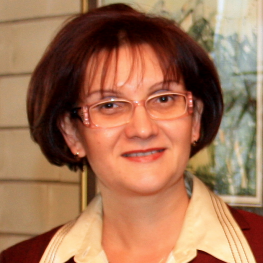
Biography
Dr. Gabriela Kjurchieva-Chuchkova has received her dental and orthodontic education at the Faculty of Dental Medicine, University “Ss. Cyril and Methodius”, Skopje; master degree in 1995 (thesis entitled ``Morphology of dentoalveolar arches at mouth breathing children``), specialization in 1996, and PhD in 2005 (doctoral thesis entitled ``Craniofacial morphology and breathing pattern”). She is currently employed as an Associate Professor at the Department of Orthodontics, Faculty of Dental Medicine, University “Ss. Cyril and Methodius”, Skopje and as an orthodontist at the Department of Orthodontics at University Dental Clinical Center “St. Panteleimon”, Skopje, Republic of North Macedonia.
Her main research interests are growth and development of the craniofacial skeleton, cephalometric standards, early orthodontic treatment, functional orthodontic treatment, interdisciplinary treatment of impacted teeth. Dr Kjurchieva-Chuchkova is an author of scientific papers published in domestic and foreign journals, member of Editorial board and an invited reviewer of Macedonian Dental Review (MDR-Journal of Faculty of Dental Medicine, University “Ss. Cyril and Methodius”, Skopje) and Journal of the Anthropological Society of Serbia (JADS). Also, she was member of the Editorial board for 50 years beyond Faculty of Dental medicine, University “Ss. Cyril and Methodius”.Skopje, 2010 and participated in the national program “Strategic plan for the development of dentistry in the Republic of Macedonia in the period 2011-2021”.
She presented her work at conferences and congresses home and abroad, as an invited lecturer. Also, she organizes conferences and congresses in the Republic of North Macedonia and she was member of the scientific board of national congresses with international participation, and editor of a book of abstracts from congresses.
Dr. Kjurchieva - Chuchkova is a member of the Macedonian Orthodontic Society (MOS)- President, Macedonian Dental Society (MDS) – Vice president, Dental Chamber of Macedonia, member of the European Orthodontic Society (EOS), World Federation of Orthodontics (WFO), Anthropological Society of Serbia (ADS), Balkan Stomatologic Society (BaSS), Balkan Association of Orthodontic Specialists (BAOS). She was a President of Balkan Association of Orthodontic Specialists 2019 and organized 3rd Congress of BAOS 2019 in Ohrid, Republic of North Macedonia
Abstract
Developmental dislocation of permanent teeth often results in tooth impaction requiring surgical and early orthodontic treatment to prevent the risk of root resorption and developmental disturbances of the dentition. Focusing to obtain a perfect treatment results, and a simultaneously short treatment time, it is very important to understand both the craniofacial morphology and craniofacial growth. Scientific assessment in orthodontic care aims to identify diagnostic tools and appliances that offer the greatest benefits for the patients in the most effective way. The link from biology to treatment plan and treatment results should be considered for every case. The panoramic radiographs could be a convenient diagnostic tool for early recognition of this condition and treatment planning in those cases. Early diagnosis and the early start of treatment using the natural forces of eruption allow the prevention of more complicated malocclusions. In orthodontic therapeutic purposes, from the planned extraction of decidous and/or permanent teeth in gaiding the occlusion purposes, through the early detection of implications and possibilities for prevention of complications, it is necessary to make adequate diagnosis, principles and cooperation of the orthodontist, oral surgen and of course the patient.
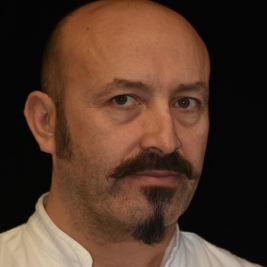
Biography
Stjepan Spalj graduated in dentistry and attained PhD in public health at School of Dental Medicine University of Zagreb, Croatia. Specialized in orthodontics at University Dental Clinic in Zagreb. Master in orofacial pain and temporomandibular disorders at University Federico II, Naples, Italy. Graduated journalism at Faculty of Political Sciences University of Zagreb. Full professor of orthodontics, oral epidemiology and public health dentistry at University of Rijeka and visiting professor at University of Zagreb and Osijek. Head of Department of Orthodontics at Faculty of Dental Medicine in Rijeka, principal investigator in 5 scientific projects, mentor of 8 PhD thesis, co-author of 4 textbooks and 90 papers in scientific and professional journals, mainly international. Erasmus scholarships and study visits at several universities in Italy (Trieste, Bologna, Padua, Naples), Germany (Mainz), Slovenia (Ljubljana), Norway (Oslo), Austria (Graz), Hungary (Budapest) and (Polland) Krakow.
Abstract
Parental influence, impaired emotional well-being, and the severity of malocclusion are the main factors prompting preadolescents and adolescents to demand orthodontic treatment, with parental influence being strong in preadolescent, but not in adolescent age. However, treatment success depends on many factors. One of the most essential aspects for orthodontic treatment success, especially when removable appliances are used, is patient compliance. Lack of cooperation may result in prolonged treatment time, suboptimal treatment results, and treatment cessation. The lecture is based on our research and will address reasons for seeking orthodontic treatment, factors related to compliance during treatment with removable functional appliances during puberty as well as clinical, psychosocial and functional outcomes. The focus will be on emotional well-being, social well-being, oral symptoms, functional limitations, parental emotions, family activities, family conflicts, and financial burden.

Biography
Dr Natasa Nikolic Jakoba is Associate Professor of Periodontology, at the Department of Periodontology and Oral Medicine, School of Dental Medicine, University of Belgrade, Serbia. She received her DDS from the University of Belgrade, School of Dental Medicine in 2001. She completed a three-year residency in periodontology in 2007 at the University of Belgrade, Serbia and received her M. Sc. degree in Periodontology (Topic: Effects of β-tricalciumphosphate in alveolar ridge preservation) at the School of Dental Medicine, University of Belgrade. She received her Habilitation (Ph.D.) in Periodontology (Title of thesis: Characterization of A. actinomycetemcomitans isolates) in 2012. at the School of Dental Medicine, University of Belgrade. From 2011. she is a member of the board of the Serbian Society of Periodontology and active member of European Federation of Periodontology. In 2015. she worked as a guest researcher at Section of Oral Radiology, Department of Dentistry, Aarhus University, Denmark. She is actively involved in under- and post-graduate studies and continuing medical education. She published and presented more than 80 scientific papers. Her research interests focus on periodontal plastic surgery, use of CBCT in diagnosis of periodontal lesions, and use of antibiotics in the treatment of periodontal infections.
Abstract
Our daily clinical practice of orthodontics is always full of many challenges. The benefits of maximum dentofacial esthetics, of optimal function, of providing health of the teeth and surrounding tissues, as well as facilitating long-term stability of the teeth will depend on certain factors that, unfortunately, have been ignored.
These factors will be discussed.
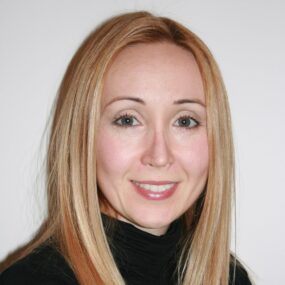
Biography
Dr. Neda Stefanovic is an Assistant Professor at the Department of Orthodontics Faculty of Dental Medicine University of Belgrade, where she has obtained her DMD, MSc, and PhD, as well as a specialty degree in Orthodontics and Dentofacial Orthopedics. Dr. Stefanovic has done her PhD research in cooperation with the Department of Orthodontics and the Craniofacial Imaging Center at Case Western Reserve University in Cleveland, OH, USA, where she has recently spent three months working on new research projects, participating in three thesis projects, and teaching. Dr. Stefanovic has also spent time at the University of Rijeka working on research projects and presenting lectures.
Her research interests are mostly focused on airways, orthognathic surgery, genetics, and most recently quality of life assessment, predictors of functional treatment outcome and patient cooperation, and clear alignment treatment.
Dr. Stefanovic teaches undergraduate, as well as postgraduate students at the Department of Orthodontics University of Belgrade, and has lectured both nationally and internationally. She has published and presented numerous scientific papers, authored a monograph, co-authored four chapters in two international books on 3D craniofacial imaging, and several chapters in three books published by the University of Belgrade. She is a reviewer in seven scientific journals.
Abstract
Evidence-based orthodontics has gained popularity over the past 20 years and has become an essential part of orthodontic practice and education. Even though there are numerous orthodontic journals that publish an abundance of papers each year we still lack certain guidelines due to inadequate evidence. Moreover, residents are not always taught how to properly read papers and find the information they are looking for.
In the first part of this lecture, there would be a short introduction on what clinicians should pay attention to when reading the paper in order to gather as much information as possible. In the second part, several relevant up-to-date topics will be discussed in the light of the currently available literature, like congenitally missing lateral incisors, clear alignment treatment, patient compliance with removable appliances, use of CBCT, etc.

Biography
Jovana Juloski was born on August 31st 1981. in Belgrade, Serbia, where she is living and working today. Dr Juloski graduated from School of Dental Medicine, University of Belgrade, Serbia on February 28th 2006., with final grade 9.71 out of 10, as the best student of the graduating class 2005/2006. In 2007 she enrolled postgraduate studies at School of Dental Medicine, University of Belgrade, Serbia, and defended PhD theses ``Craniofacial growth in Turner syndrome patients`` defended on June 5th 2012. In 2009 she enrolled specialization program in ``Orthodontics``, and took specialist exam on November 1st 2012. (grade 5 out of 5). She has been working at the Department of Orthodontics, School of Dental Medicine, University of Belgrade, Serbia since September 2012. as orthodontic specialist, and since February 2019. as teaching assistant with PhD. Dr Juloski has also been working as associate researcher at scientific project of Ministry of science and technological development „Genetic control and molecular mechanisms in malignant, inflammatory and developmental pathology in orofacial region“ since January 2011. Throughout the education she has been awarded with scholarships from Royal Norwegian Embassy in Belgrade (2004), Ministry of Education, Republic of Serbia (2002-2006), Secretariat for Social and Children’s Welfare, City of Belgrade (2004-2006), and School of Dental Medicine scholarship for learning abroad in Oslo, Norway (2015).
Abstract
Young patients with Class III malocclusion have always been a challenge for clinicians concerning adequate diagnosis, treatment plan and prognosis. This type of malocclusion involves a number of skeletal, dental and even functional components. Depending on malocclusion origin different treatment protocols are recommended, from delaying orthodontic treatment by orthognathic surgery until after the end of growth to maxillary protraction in early mixed dentition.
Considering these topics, the aim of this lecture will be to describe and discuss the treatment options for Class III malocclusion in young patients with an emphasis on maxillary protraction. Protraction facemask therapy has been advocated in early treatment of Class III malocclusions with maxillary deficiency. Even though dental and skeletal effects of this appliance are well documented in the literature, clinicians are sometimes reluctant to provide early orthopedic treatment due to inability to predict mandibular growth. These patients might still need surgical treatment at the end of the growth period, even after receiving early orthopedic treatment. In this lecture the following topics will be discussed: Is it worth the burden to treat a Class III malocclusion early? If so, what type of Class III malocclusions will benefit from early facemask treatment? When is the best time to start treatment? Can early treatment help to predict excessive mandibular growth?
It seems that the most important factor for treatment of Class III malocclusion in growing patient is case selection. The clinical treatment results showed that it is possible to achieve favorable outcomes with early management in certain Class III malocclusion patients.
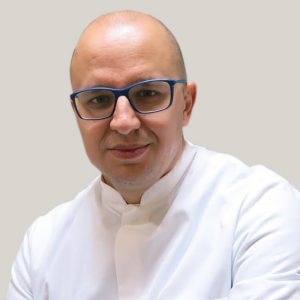
Biography
Miodrag Popov, DDS, graduated from the Dental Faculty of Novi Sad, Serbia in 2003, finished a postgraduate training in orthodontics at the University of Belgrade, Serbia, in 2013.
Miodrag Popov has his own private dental practice with the primary focus on orthodontics in Novi Sad, Serbia. Posses broad theoretical and practical knowledge in many different fields of orthodontics. His primary fields of interest include scientific research and practical implementation of skeletal anchorage with mini implants and biomechanics in orthodontics.
He has participated in many international conferences and has attended numerous courses on mini implants and biomechanics in orthodontics and has organized his own lectures and courses on the same topic.
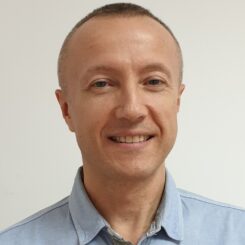
Biography
Nenad Nedeljkovic
Position:
Associate Professor of the University of Belgrade, School of dentistry, Clinic of Orthodontics (head of department).
Academic qualifications:
University of Belgrade, School of dentistry: DDS (1996), master degree (2001), specialization in Orthodontics (2002), PhD (2007).
Research interests:
Contemporary treatment of Class II malocclusions, Fixed functional orthodontic appliances, Pre-Orthognatic Surgery treatment, Age estimation, mini implants and biomechanics in orthodontics.
Scientific activity:
31 published papers in journals (20 papers SCI indexed), 29 invited lectures, two books.
Memberships in Professional and Scientific Societies:
Serbian Orthodontic Society, European Orthodontic Society.
Abstract
Orthodontic mini-implants are widely accepted in modern orthodontic practice. The main role of orthodontic mini-implants is to provide a temporary skeletal anchorage. The most important aspect of any orthodontic treatment is the maximum desired movement (tooth, jaw) with minimal unwanted side effects. There are two basic forms of absolute anchorage: direct (when the active segment is produced directly from the mini-implant) and indirect (when the active segment is produced from the reactive segment that is fixed to the mini-implant to strengthen the anchorage). The main purpose of using mini-implants lies in the fact that they represent an absolute - skeletal anchorage. For that reason, there are numerous indications for their use for both dental and skeletal movements, especially in complicated cases, as well as in cases of possible loss of anchorage and disabling the most favorable result of orthodontic therapy. Using mini-implants as a skeletal anchorage, movements of many teeth, which previously seemed almost impossible, became feasible. Likewise, unwanted tooth movements can be minimized. Their small size allows them to be inserted in different places. Mini-implants for reinforcement are most often placed in the buccal interdental alveolar bone which allows the orthodontist to use them for different mechanics in everyday practice. Although the skeletal anchorage with mini-implants gives freedom in designing the force system and overcomes the problems of patient cooperation, the anatomical limits of tooth movement should always be taken into account. The skeletal support with mini implants should be planned based on the assessment of the required force systems and anatomical limits of the tooth movement.





